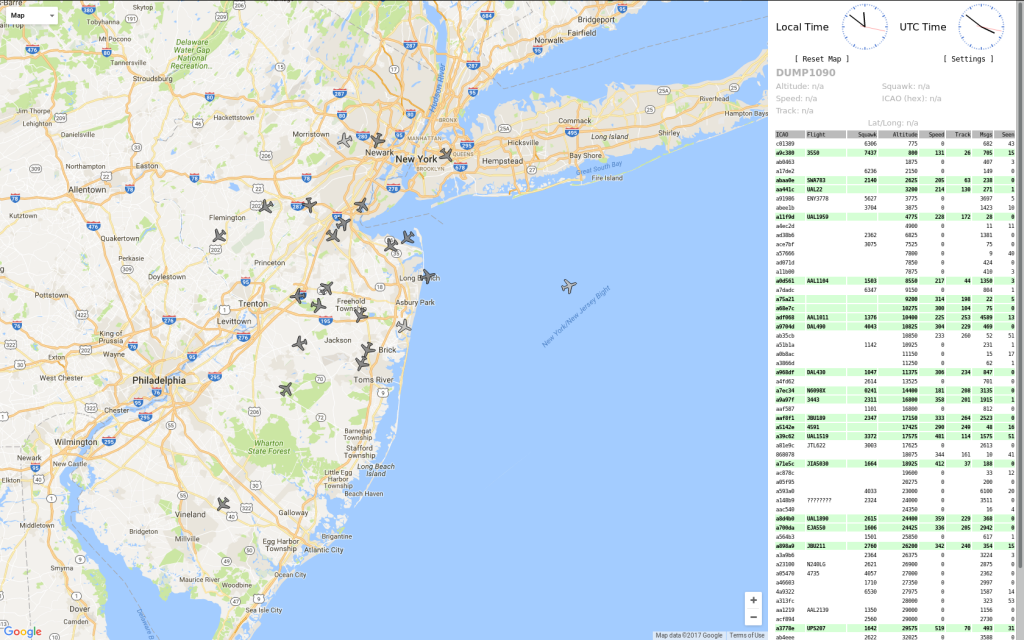Many thanks to SWLing Post contributor, Dan Srebnick (K2DLS), who recently posted a detailed overview of his ADS-B installation on his blog:
Monitoring NextGen ATC (on the cheap!)
A key component of next generation air traffic control is Automatic Dependent Surveillance – Broadcast (ADS-B). The current FAA mandate is for all included aircraft to output ADB-B transmissions no later than January 1, 2020. But you don’t have to wait to receive and map ADS-B. There is a lot of air traffic to be seen.
[…]I decided to use a spare older RTL-SDR stick based on the RTL2832U and R820T chips. This USB device comes with a small antenna that I hoped would be good enough to get me started. It is not in any way optimized for the 1090 MHz signals that are used by ADS-B and is roughly 19 parts per million (ppm) off frequency. It cost a bit over $10 at a hamfest a couple of years ago. The designs have improved since the early models were offered. Newer models include a TCXO (thermally compensated crystal oscillator) for stability and accuracy.
I needed software to take signals from the RTL-SDR stick and plot them on a map. That software is “dump1090”, originally written by Salvatore Sanfilippo. I added an install stanza to the Makefile, along with a systemd service file, for a smooth system install. I also needed to install the RTL-SDR USB drivers. The complete installation runs “headless”, meaning no monitor, keyboard or mouse need be connected. Remote management can be done via ssh.[…]
Continue reading on Dan’s blog…
This is fantastic, Dan! Thank you for taking the time to share all of the code snippets you needed to do the installation on the Raspberry Pi B as well. Post Readers: if you have an older Raspberry Pi and RTL-SDR sitting on a shelf, use Dan’s guidance to turn them into an ADS-B feeder!
Click here to read my ADS-B feeder tutorial based on the Raspberry Pi 3.


The Pi2 RTL-SDR combo on ADB-S was the one of the best projects I have played with. Don’t make the mistake by keeping the antenna inside though, I have my stock RTL-SDR antenna sitting on the external window sill running the coax into the internal sill and can pick up aircraft at the max receiveable range, very impressive for such a simple setup.
I hacked the dump1090 javascript to lookup airline, route, squawk idents from text files (not the best but quick an dirty) and displays airline logo (png’s from the net) it just sits there 24/7 and keeps on going.
Top tip: use a good quality low profile USB memory stick (boot from the microsd to the USB stick) as the wear leveling for microsd cards are generally junk, you might get lucky for a while then all of a sudden things will start going wrong.